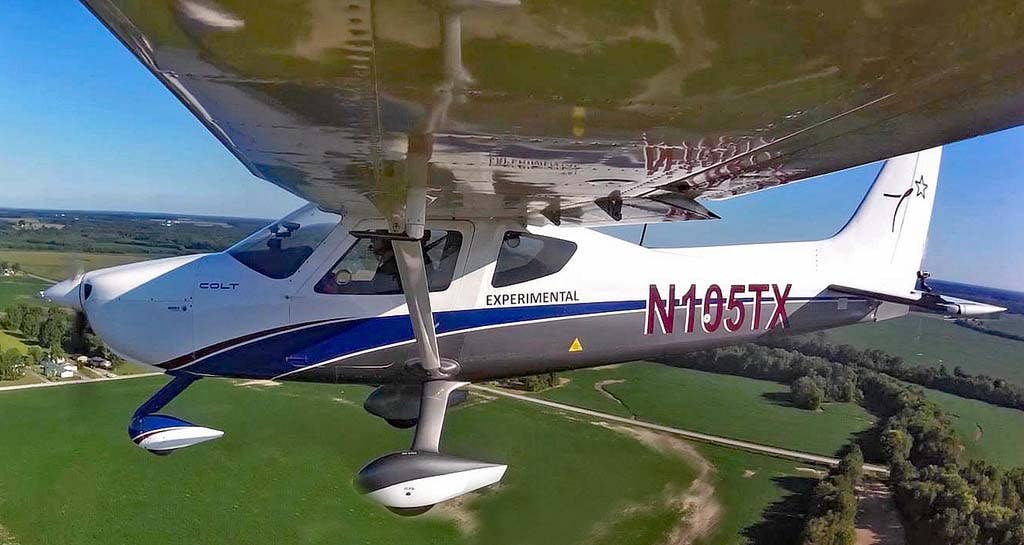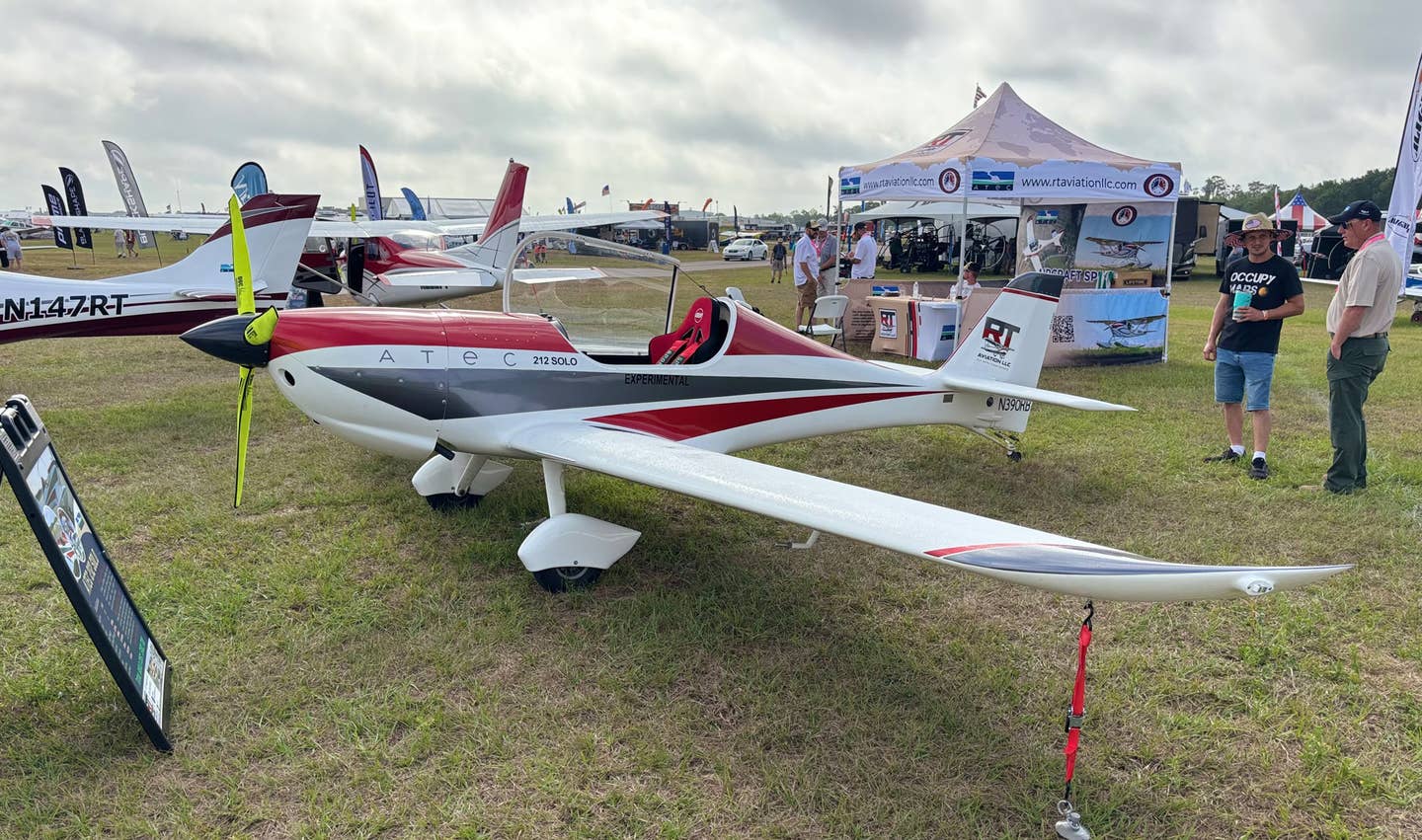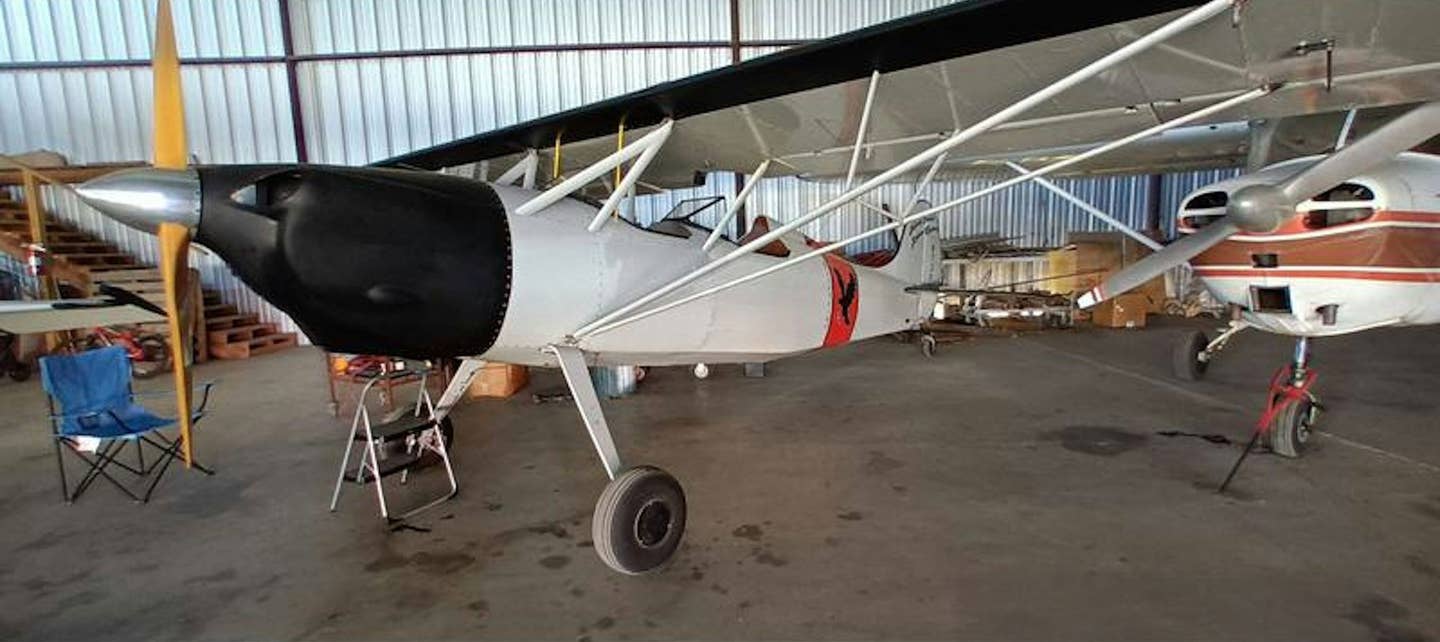My Take on MOSAIC, as Our Comment Window Closed
The comment period for the FAA’s notice of proposed rulemaking, Modernization Of Special Airworthiness Certification (MOSAIC), ended as of January 22, and aviation associations drew my attention—along with others—this month…

Texas Aircraft’s Colt SLSA (photographed before SLSA approval) in flight at the Midwest LSA Expo 2023. [image provided by Dan Johnson]
The comment period for the FAA's notice of proposed rulemaking, Modernization Of Special Airworthiness Certification (MOSAIC), ended as of January 22, and aviation associations drew my attention—along with others—this month with their lengthy and considerable comment submissions.
The General Aviation Manufacturers Association (GAMA) made waves earlier in the month when it announced it disagreed with some aspects of the MOSAIC NPRM as written, and it was hard at work on detailed comments to the FAA to outline its concerns.
- READ MORE: GAMA Takes Issue With Aspects of MOSAIC
In the past, GAMA has often paired up with the Experimental Aircraft Association and other “alphabet” aviation groups in public comments and statements.
The EAA submitted comments just ahead of the comment period’s close, in concert with the Aircraft Owners and Pilots Association, National Business Aviation Association, and the National Air Transportation Association.
The comments by and large support the proposed rulemaking as written, but do draw attention to particular points that could use extra consideration. It’s easy to find summaries of most of the salient points, but as a student of aviation whose journey has been marked by some of the particular economic forces that have put pressure on GA in my lifetime, the following point in the document drew my eye:
The average age of general aviation aircraft is estimated to be nearly 50 years. Despite hours flown in single-engine piston aircraft being at their highest in at least a decade, the fleet itself is inexorably aging. Between 2012 and 2021, the total airframe hours of the average single-engine piston aircraft increased by 8.4%. New type-certificated aircraft remain stubbornly out of reach for most small flight schools and private operators, offering no immediate solution to this unsustainable trend.
The FAA’s MOSAIC proposal, which expands the definition of aircraft allowed to meet design and production standards set by industry consensus standards rather than prescriptive FAA regulations, is a key component in reversing this trend. This approach has brought certification costs down to the lowest practical level for factory-built aircraft while maintaining a high level of safety, as demonstrated over the past 20 years.
At somewhere between half a million and $1 million—or more, in some cases (depending on whether you’re looking at a Cessna or, say, a Diamond), most new, OEM-produced four-seat aircraft are out of my reach financially. I think this is true for most of the general aviation community—and it certainly is for me. The primary market for these new GA piston aircraft is flight schools—and typically only flight schools with the financial resources to offset that cost with higher income.
And as the associations’ comments note further into the document, the proposed MOSAIC changes could mean good things for flight schools in particular, because “Most aircraft used for training and rented by fixed-based operators are four-seat models, demonstrating the need to expand the category. Having two additional seats in larger, more capable light sport aircraft would aid market desirability. Many existing flight schools utilize the ‘Gemini’ method of flight training, whereby two students are partnered and always observing one another during the conduct of a lesson."
But what about individual private pilots, who won’t necessarily want to move on to aviation careers or advanced training? With the average individual annual income in the U.S. falling at just under $60,000, the cost of a new flying machine is currently anywhere from seven to 14 times that mark. Five decades ago, a new airplane was somewhere between $12,000 and $50,000, and the average salary in 1978, a banner year for GA aircraft sales, was $15,060. You begin to see the gap here, and suspect this might have something to do with why fewer of us can indulge in a new airplane like our parents or grandparents.
How did we get here, and can MOSAIC really help?
The answer to both is, it’s complicated. While 1978 was an unprecedented year for aircraft sales, with roughly 18,000 new airplanes moving into hangars across the country, there was trouble brewing on the horizon that foreshadowed the decline of the industry in the ’80s.
There were some landmark lawsuit cases against OEMs beginning in the 1960s that set legal precedents for litigation directed at manufacturers when something went wrong with GA aircraft. By the 1980s, the aviation world was mired in liability suits.
At the time, GAMA and other associations pointed to product liability lawsuits as the deciding factor in the rise of costs, and the groups’ lobbying efforts eventually led to the 1994 General Aviation Revitalization Act, which limited product liability for manufacturers to 18 years. This helped OEMs secure insurance (insurers had been withdrawing business across the industry due to these lawsuit issues) and resume manufacturing and marketing with some confidence.
And yet, the resource-cost gap for the average pilot has continued to widen—even in today’s used aircraft market. To some degree, that’s accounted for by smaller flight school’s demand for more affordable aircraft, which adds competition to the market for some of those 40 or 50-year-old machines. But, why didn’t GARA have its intended effect—assuming that was to bring the GA market share for individual buyers back up to the glory days.
In 1995, a couple of researchers, Lawrence Truitt and Scott Tarry, asked similar questions in an in-depth study for that year’s June issue of the Transportation Journal, American Society of Transportation and Logistics, Inc. Their article, The Rise and Fall of General Aviation: Product Liability, Market Structure, and Technological Innovation, pointed out that the factors affecting GA economics were more nebulous and complex than the litigation legislation could account for.
They pointed to the oil crisis of the 1970s, the general recession of the 1980s, the increased longevity of existing airframes, and even a training boom among veterans brought on by the looming threat of losing primary flight training GI benefits.
The economic and political landscape holds some uncanny similarities to today, with pressures coming from the post-Colgan Air crash legislation, which raised flight training hours needed for airline transport certification (and has something to do with the flight school pressures on the used aircraft market in particular), several recent economic downturns, fluctuations in oil prices, and the lingering effects of a pandemic that affected supply chains and parts prices globally.
Can MOSAIC help revitalize GA airspace, which accounts for somewhere around 5% of our nation’s GDP? Well, as these associations point out—it looks hopeful. There’s significant potential for some reduced pressures on OEMs and the certification process. There’s increased potential for aviators to participate in this economy on an individual scale. Assuming the FAA carefully considers the full potential impact of its proposal, the future for GA could be very bright indeed.
I, for one, will believe it when I see it.

Subscribe to Our Newsletter
Get the latest Plane & Pilot Magazine stories delivered directly to your inbox






